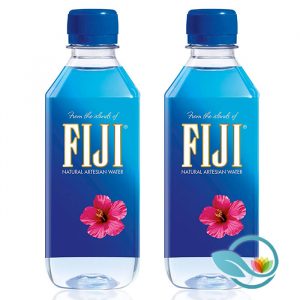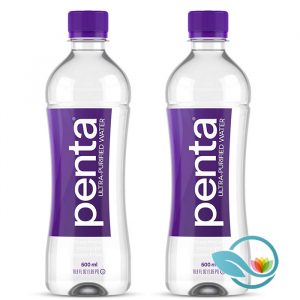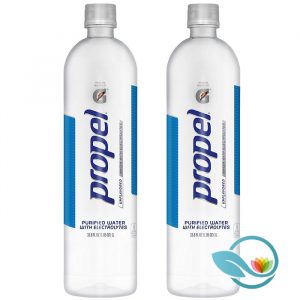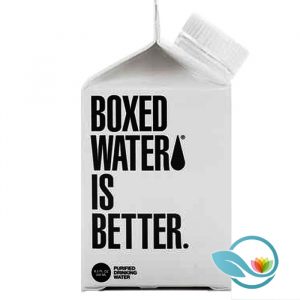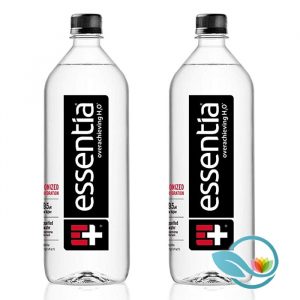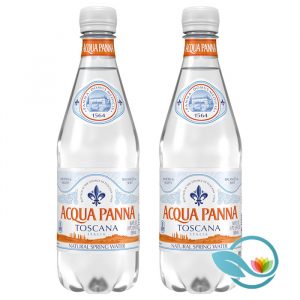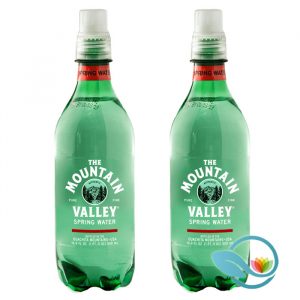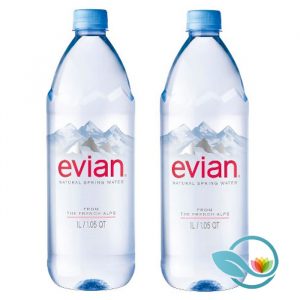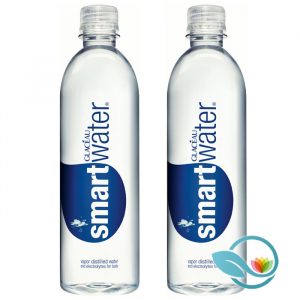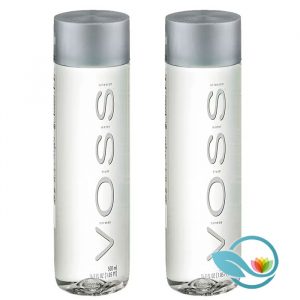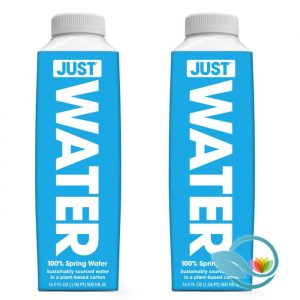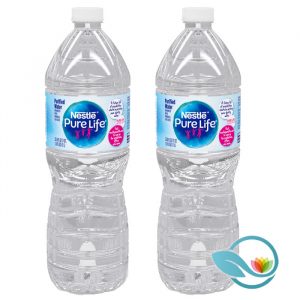Health & Wellness
Reviewing the Best Bottled Water of 2019
Published
5 years agoon
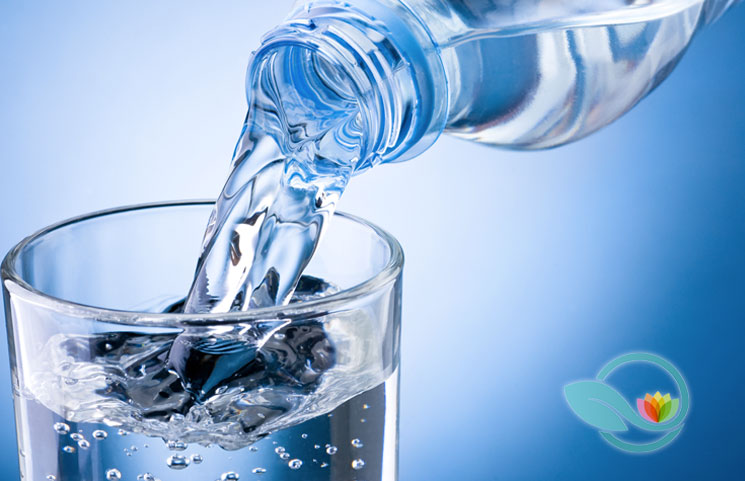
Every human being on the planet needs water to live. Today, bottled water makers are competing to bring you the best, tastiest, most nutritious water from the purest sources worldwide.
Many of us take clean water for granted. However, in many parts of the world, clean water cannot be trusted. It’s contaminated with bacteria, heavy metals, or organic toxins. These compounds make it through the waste treatment process, contaminating our bodies.
Bottled water isn’t immune to this issue, either. However, by choosing the right bottled water, you can maximize safety and purity. With that in mind, let’s take a look at the best bottled water available today.
Rankings
Fiji Natural Artesian Water
Fiji Natural Artesian Water is the best-known bottled water on this list. As one of the world’s most popular premium bottled water brands, Fiji has carved a niche for high-priced, high-purity water sourced from an island of Fiji.
A pack of 24 x 16.9 ounce bottles is priced at around $40, or around $1.50 to $2.50 per bottle depending on where you buy.
Fiji Water is headquartered in Los Angeles, California. However, the company claims the water comes from an artesian aquifer in Viti Levu, Fiji. Viti Levu is the main island and largest island of Fiji. The island’s population of 600,000 is mostly concentrated around the coasts, with the interior of the island consisting of picturesque mountains. Fiji Water gets its water from a spring source located somewhere within those mountains.
Penta Ultra Purified
If you value purity above all else, then Penta Ultra Purified is the best choice. The water is extremely pure. There are no electrolytes or trace elements added for taste. The water is also tested to make sure it’s free of pesticides, heavy metals, pharmaceuticals, and BPAs, among other compounds.
All of this testing leads Penta Ultra Purified to have one of the lowest total dissolved content ratings in the world today. The total dissolved content of the water is less than one part per million. Many reviewers also appreciate the water’s taste, which, as you might expect, tastes just like pure water.
Propel Electrolyte Water
Propel is the first water on our list so far to contain electrolytes. Our bodies need more than just water to stay hydrated: we also need electrolytes. That’s why some athletes drink Gatorade and other electrolyte-rich beverages.
However, some people avoid these beverages because of their high sugar content. That’s where Propel may help.
Propel gives you a small dose of electrolytes without the high sugar content. There’s also a blend of B-complex vitamins. If you want to stay hydrated and fueled without overloading your body with sugar, then Propel may be the right choice for you.
Propel is also made by the makers of Gatorade. You can buy Propel in bottled water form. OR, you can buy powder packages that can be mixed into the water of your choice. There are also four different flavors available if you want flavored water, including Black Cherry, Mandarin Orange, Berry, and Peach. There are 0 calories and 0g of sugar in all flavors.
Boxed Water Is Better
One of the criticisms of bottled water is that it’s bad for the environment: all of those plastic bottles end up in our oceans and landfills and never break down. Boxed Water Is Better was founded to combat that problem: the water is packaged in BPA-free paper that is 100% recyclable. About 75% of the box is from a renewable resource (trees).
All of that recyclable material doesn’t matter, of course, if the water tastes bad. Fortunately, Boxed Water is Better tastes pretty good: the water is purified through reverse osmosis then disinfected with ultraviolet light treatment. It’s also carbon-filtered. However, the source of the water is just normal municipal drinking water: if you’re looking for water sourced from remote mountaintops, then Boxed Water Is Better may not be the right choice.
Essentia Ionized Water
Ionized water has been a trendy product in recent years. The theory behind ionized water is that certain acidity (pH) levels affect your body in different ways. Ideally, you’ll drink water with the same acidity as your body to maintain a healthy pH balance. The science is questionable, but many people still appreciate ionized waters.
Some people also believe drinking a water with more or less acidity can affect your body in different ways. Drinking a water with lower acidity, for example, can decrease heartburn symptoms.
Essentia makes bottled water that has been ionized to increase its pH to make it more alkaline. There are electrolytes in the water that support a higher pH, giving it a sharper and more distinct taste than most bottled waters. If you believe in the power of ionized water, then Essentia Ionized Water may be the right choice for you.
Acqua Panna Natural Spring Water
Acqua Panna comes from Italy. It’s not as popular or well-known as other options on this list. however, the people who like Acqua Panna like it a lot. They particularly praise the taste of the water. The minerals inside the water give it a distinctive taste. It’s been described as “light, airy, and clean” by reviewers.
The water is also one of the more affordable options on this list. You can find 500mL bottles priced under $2. Acqua Panna is sourced from the Apennine Mountains of Tuscany just north of Florence from a spring 3,700 feet in elevation.
Mountain Valley Spring Water
Mountain Valley Spring Water is one of the few on this list to come in a glass bottle instead of a plastic bottle. The water is sourced from a spring in Arkansas.
If Mountain Valley Spring Water looks or sounds familiar to you, then you might be aware of its celebrity endorsements: the water has been supported by President Calvin Coolidge, President Dwight D. Eisenhower, Elvis Presley, and even Triple Crown-winning horse Secretariat.
With all of those endorsements, you expect Mountain Valley Spring Water to taste pretty good – and it does. The water is purportedly sourced from an aquifer that has been naturally filtered over a 3,500 year period. The water also has a naturally high pH, which is why some people drink the water to neutralize acidic food.
Evian Natural Spring Water
Evian is another well-known and popular bottled water brand. Many people appreciate Evian because it comes with the natural minerals present in spring water. It’s not purified like certain other brands listed here.
Evian is sourced from glacial runoff in the French Alps, which is why trace minerals like potassium and magnesium are naturally present in the water. Those who like Evian will tell you that the minerals balance out the taste.
Evian also likes to claim that their water is backed by 15+ years of natural filtration: every drop of Evian starts as rain and melting snow on the peaks of the French Alps, eventually making its way through layers of glacial sand over a 15+ year period. Evian bottles the water at the source and adds nothing else.
Glaceau Smartwater
Smartwater starts as a purified, vapor-distilled water. Then, Glaceau adds a small amount of electrolytes to improve the taste. The water has been tested to be free of any contaminants. However, because of the added electrolytes, users still get the benefit of trace minerals.
Interestingly, Smartwater’s bottle actually trash talks people who like spring water: they claim their pure, vapor-distilled water pulled from the clouds tastes way better.
If you appreciate pure water but also want the benefits of trace amounts of minerals, then Glaceau Smartwater may be the right choice for you.
Voss
Voss has the most distinctive bottle on this list: the long, test-tube like bottle looks like it’s from Star Wars or a science lab.
The water is sourced from deep wells in Norway before being packaged in a BPA-free, PET plastic bottle. It’s one of the best-tasting waters in the world today, which is why this is the water you’ll find at many high-end restaurants.
It’s unclear if Voss processes the water in any way after extracting it from the artesian well in southern Norway. However, the company claims their water is “naturally pure” after being filtered through the earth over decades.
JUST Water
JUST Water, like Boxed Water Is Better, has swapped out plastic for recyclable materials. JUST Water makes its bottles from recycled and recyclable paper.
The water is packaged at a pH of 8.0, making it ideal for those who want a more alkaline water.
Since the water is sourced from a natural spring, there are also trace amounts of electrolytes and minerals present in the water.
Nestle Pure Life
Nestle owns 64 different brands of water, including everything from Perrier to Poland Spring. Pure Life, however, is its most popular bottled water. This by far one of the most recognizable brands in gas stations and convenience stores.
The water is purified and carbon-filtered from a municipal source before being carbon filtered, softened, de-mineralized, then re-mineralized and disinfected with ultraviolet light and ozone.
Our Rankings
Ranking bottled water can be challenging: all of the waters listed above claim to be the best-tasting, purest water available today. To separate waters from one another, we used the following ranking factors:
Source: Where does the water come from? Some of the waters listed above come from municipal sources (i.e. tap water) before being purified. Other waters come from glacial springs, underground aquifers, tropical islands, and other sources.
Purity: Purity is more than just a buzzword. When a water is pure, it’s free of trace metal contaminants like lead, cadmium, and mercury. It’s free from organic contaminants, bisphenol A (BPA), and other compounds.
Taste: Different bottled waters can have profoundly different tastes. There’s the neutral taste of pure water, for example, and the flavored taste of mineralized spring water. We understand everyone has different tastes, so we tried to be objective with our rankings while listing a range of different water flavors.
Minerals and Electrolytes: Some people like natural minerals and electrolytes in their water (they’re naturally present in spring water). Other people prefer it when pure water has electrolytes added to it. Some people don’t want any minerals or electrolytes in their water at all.
Filtration Method: Many of the spring waters listed above are unfiltered and unprocessed. They’re bottled naturally at the source with no additional processing. Others are carbon-filtered or exposed to UV to disinfect compounds.
Environmental Consciousness: Two of the bottled waters listed above use recycled materials instead of plastic. Most bottled water, however, comes in plastic bottles. The boxed water brands have the lowest environmental impact. However, plastic bottled water brands have taken certain steps to reduce their environmental impact. Many of them are carbon neutral, for example. Plastic bottled water will never be good for the environment, but we appreciate companies who take steps to limit their environmental impact.
Flavoring and Other Ingredients: All of the waters listed above are unflavored. However, some of the waters – like Propel – are available in flavored varieties. We did not, however, include any bottled waters with high levels of electrolytes or other compounds. Those waters fall into a different category (like sports drinks).
Who Should Buy Bottled Water?
Many of those who drink bottled water live in a place with bad tap water. The tap water may be unfit to drink, for example, or it may have excessive levels of toxins or organic compounds.
Even in developed countries, certain municipalities may have poor-quality water. Flint, Michigan is the best-known example. However, a recent report indicated “thousands” of towns across the United States could have similar problems with lead in the future – and Flint wasn’t even the most lead-contaminated town in America.
Cities like Milwaukee, Pittsburgh, and Detroit (all of which are known for their industrial past) are at a particularly high-risk. However, small towns in agricultural areas and towns away from natural water sources also struggle to provide clean drinking water.
Others buy bottled water and place it in emergency shelters or in a disaster preparedness kit. When a disaster like a hurricane hits, tap water can quickly become compromised. You can go without food for several weeks – but you can’t go without water.
Of course, most people just buy bottled water because they like it. They enjoy the taste of bottled water more than they enjoy tap water or other water sources. They enjoy the cleanse taste of purified water, for example, or the unique taste of mineralized mountain spring water from different sources.
Some people also drink bottled water because of the electrolytes. None of the brands listed above had high electrolyte content. However, even trace amounts of electrolytes could help hydrate the body.
Benefits of Bottled Water
We don’t have to tell you the scientific benefits of water: your body needs water to survive. However, various studies have been done specifically on bottled water, including studies showing that bottled water can be purer and better for you than tap water.
Tap water can be contaminated by heavy metals in the pipes, for example. There could be organic wastes or pesticides from nearby agricultural activity. Sometimes, trace amounts of pharmaceuticals can slip past the water purification process. As mentioned above, this isn’t just a problem in developing parts of the world: it can also affect developed nations.
Of course, some people drink bottled water even when their local tap water is perfectly clean. Some people just prefer the taste of bottled water. Others like the idea that they’re drinking water from a spring mountain source and not a municipal wastewater treatment plant.
Does science back up the notion that water is purer and healthier? Let’s take a look at some of the landmark studies performed to date.
First, bottled water is free of heavy contaminants like lead. The same cannot be said for tap water in certain parts of the world – including America.
As America’s infrastructure continues aging, lead is increasingly entering the water supply. This has already occurred in Flint, Michigan. Facing mounting financial problems, Flint officials switched the city’s water source to a less expensive – and more polluted – river back in 2014. The city also failed to adequately treat the water. Aging lead pipes leached toxic lead into the city’s water supply. Ultimately, this has led to up to 5% of children in Flint having dangerous levels of lead in their body.
The worst part about this water crisis was the cover-up: the public was kept in the dark until a team of doctors published a report on a shocking rise of blood levels of lead. The 2015 report published in the American Journal of Pediatric Health shed light on the crisis and forced officials to take action. Even after the report was published, however, city officials insisted their local water was within federal guidelines for safety. Testing revealed that wasn’t the case.
Flint is a nightmare scenario for contaminated tap water. However, researchers believe it could soon affect larger cities like Pittsburgh, Milwaukee, and Detroit. All of these cities are known for their industrial pasts. If city officials fail to take steps, these cities could soon face problems related to aging lead pipes.
It’s not just industrial towns, either. One study claimed up to 45 million Americans are drinking water from municipal systems that do not comply with federal drinking water safety standards. That means approximately 1 in 7 Americans are currently drinking water that’s below federal guidelines. That means your tap water could have excessive levels of toxins, heavy metals, bacterial contaminants, and other compounds.
Or, check out this federal report published in 2016 showing that three quarters of small municipal water supplies do not meet federal safety standards for bacterial contamination. It’s not just heavy metals making their way into water supplies: it’s also bacteria.
When tap water isn’t processed or purified properly, living bacteria can multiply, compounding the problem further. This problem is exacerbated by small towns that don’t have the funding for advanced purification systems. As water treatment systems have become increasingly complex (and expensive), many small towns have been left behind.
Research has shown that certain pharmaceutical drugs cannot be removed using standard tap water purification procedures. Even when water passes through a purification system that removes bacteria and heavy metals, there could still be pharmaceutical compounds present in the water supply.
Drugs can enter the water supply when people flush drugs down the toilet, causing metabolized and unmetabolized forms of prescription medication to make their way into the water supply. Around certain cities, researchers have found high concentrations of drugs put there simply from the urine of people. When this water gets reused and passes through a purification process, the drugs cannot be removed.
In other words, when you drink tap water in certain parts of the country, you could be drinking pharmaceutical drugs leftover from someone else’s urine.
Pharmaceutical drugs can be removed with certain water processing techniques – like distillation. However, distillation is not a practical way to clean drinking water for large populations.
The presence of pharmaceutical drugs in the water supply was first observed back in 2004. However, researchers in the UK published a study in 2016 showing that pharmaceutical drugs were still a significant threat to the water supply today.
Certain tap water also contains endocrine disruptors, an emerging category of chemicals that are particularly harmful to human health – even at a low dose. These chemicals disrupt your endocrine system because they’re similar to human hormones at a molecular level. Your body absorbs these compounds in tap water and then doesn’t know how to deal with them.
Endocrine disruptors have proven to be particularly harmful to infants and children because their hormonal systems aren’t as developed. When children are exposed to endocrine disruptors, it can affect the natural hormones for growth, development, and puberty.
It’s not just children and infants: adults can also be affected by endocrine disruptors. Researchers have suggested that endocrine disruptors could be linked to higher levels of birth defects, sexual dysfunction, and other health problems in adults.
You’ve probably already heard of one endocrine disruptor: bisphenol A (BPA). Many bottled waters will specifically advertise themselves as being BPA free. However, there are plenty of other endocrine disruptors that may also be active in our water supply. Worse, a study published in Environmental Science & Technology showed that conventional water treatment methods are ineffective against endocrine-disrupting compounds. Just like pharmaceutical compounds, endocrine disruptors slip past modern tap water purification systems and cause serious problems.
Is bottled water different? Well, bottled water that comes from municipal sources may have these same issues. However, the bottled waters listed above use advanced distillation and purification procedures that go above and beyond the purification used by city wastewater treatment plants. Other bottled waters come from spring sources, which makes them free of many of the contaminants found in municipal sources.
Another advantage of bottled water is that it doesn’t pass through pipes: it’s sealed in a sterile bottle. As long as that bottle remains sealed, the probability of bacteria contamination and heavy metal toxification remains low.
Now let’s talk about some of the surprising benefits of drinking more water. Researchers have shown that drinking more water can not only help you lose weight – but it can even make you smarter.
This study published in Analysis in Nutrition Research in 2019 showed that chronically low water intake was associated with impairments in cognitive function, glucose regulation, and kidney function. It also increased oxidative stress. Researchers came to these conclusions after evaluating a range of studies on “hypohydration” – or chronically low water intake. Hypohydration puts enormous stress on the body, leading to various health problems.
Meanwhile, multiple studies have connected water consumption with weight loss. In this study published in Frontiers in Nutrition in 2017, for example, researchers concluded that “increased hydration can be associated with weight loss.” Here’s how researchers concluded their study:
“This brief review highlights the considerable evidence that an increase in water intake, i.e., increased hydration, leads to loss of body weight.”
Another study suggested that water could function like a good diet pill by inducing thermogenesis. In this study published in the Journal of Clinical Endocrinology & Metabolism in 2003, researchers assessed the affects of drinking 500mL of water on 14 healthy-weight subjects. Researchers found that drinking water “increased metabolic rate by 30%” within 10 minutes of consumption and reached a maximum metabolic rate after 30 to 40 minutes. In other words, drinking more water could increase metabolic rate and enhance thermogenesis (fat burning) in the body.
Ultimately, it’s no secret that drinking more water is generally good for you. Numerous studies have shown that to be true. However, not all tap water is good: tap water can be contaminated with bacteria, heavy metals, pharmaceuticals, and other harmful compounds. By drinking bottled water, you might be able to enjoy the benefits of water with none of the potential risks – particularly if you live in a city with poor tap water.
Side Effects of Bottled Water
Generally, bottled water is well-tolerated. Unless you’re drinking water packed with high levels of electrolytes and other compounds, it’s unlikely your body will be negatively affected by drinking bottled water.
However, it’s certainly possible to drink too much water. It’s called “water intoxication”. You may have heard the story of a California woman who died after participating in a radio station’s water drinking competition back in 2007. She drank so much water that her cells became overhydrated, causing the body to shut down.
It’s also possible to get in trouble by drinking nothing but pure water: your body doesn’t just need water to stay hydrated; it also needs electrolytes like potassium and sodium. If you only drink pure water with no added ingredients and you’re not eating any food, then it’s possible to become dehydrated even while drinking lots of water.
Generally, however, you have nothing to worry about when drinking bottled water.
Recommended Intake
Your body is about 60% water. You are constantly losing water via urine and sweat. To prevent dehydration, you need to drink an adequate amount of water every day.
The specific recommended “dosage” varies from person to person. Some health authorities recommend the “8×8” rule, for example, where you drink 8 x 8-ounce glasses of water every day (or about 2 liters).
Some people need less than this amount and others need more. Someone who is taller or heavier, for example, will need to drink more water than someone shorter and smaller.
Talk to your doctor to ensure you’re getting adequate water intake.
FAQs About Bottled Water
Q: Which bottled water is safest to drink?
A: Most bottled waters are perfectly safe to drink. However, to ensure you’re getting the safest water, you may want to choose a bottled water that comes from a natural mountain spring. Or, you can choose one that has gone through an intense purification process. Osmosis filtering, for example, is particularly powerful, as is distillation.
One of the best bottled waters listed above, for example, is Penta Ultra Purified. This water goes through a rigorous purification and filtration process that makes it as close to pure water as possible.
Q: What happens if I don’t drink enough water?
A: Your body can only survive a few days without water. As your body becomes increasingly dehydrated, your organs start to shut down. Eventually, you’ll die.
Q: Is it true bottled water is worse than tap water?
A: Some reports have indicated that bottled water is often worse than tap water in terms of contaminants and heavy metals. It’s true: certain brands of bottled water have tested more poorly than tap water. However, almost half of all bottled waters come from tap water and go through additional purification.
Q: Is bottled water bad for the environment?
A: Using plastic is never going to be good for the environment. However, bottled water makers have taken steps to reduce their impact. Some bottled water makers have gone carbon neutral, for example. Others have switched to boxed water or biodegradable sources. Plastic water bottle waste, however, continues to be a huge problem.
Q: Why do bottled waters have ingredient labels?
A: You might laugh when you pick up a bottled of water and see a “Nutritional Facts” label on the side. However, all foods, drugs, and supplements are required to have this label according to various national standards – even if it’s just pure water with no added ingredients.
Q: How long does bottled water last?
A: Many people buy bottled water to store in an emergency shelter or disaster preparedness kit. That’s great! Studies have shown, in fact, that bottled water will pretty much last forever. However, certain manufacturers have placed expiry dates on their water because they believe taste will be impacted after a certain period of time. As packaging changes, for example, it could impact the taste of the water. Nestle, for example, gives their bottled waters a two-year shelf life. Of course, the water is still perfectly fine to drink after this period – it just may taste a little different.
Q: Do different bottled water brands really taste different?
A: Yes! You may be surprised at the difference in taste between different bottled water brands. Many of these differences are linked to minerals and electrolytes. Some claim that spring water, for example, has a “sweetness” you won’t find in pure water. You can find plenty of bottled water taste tests online where experts give their opinions on which water tastes best.
Q: Do I really need bottled water if I live in a developed country?
A: Most first world countries have perfectly clean tap water supplies. However, certain developed countries continue to struggle with water supply issues. This problem is particularly common in the United States, where an estimated 45 million Americans drink tap water that does not meet federal standards. Check your town’s tap water rankings to verify your tap water is safe to drink.
Final Word
Drinking water is good for your health. It’s been linked to weight loss and cognitive function, among many other benefits. Bottled water may be better for you when buying the right brands. Bottled water often goes through additional purification processes, for example. Or, certain bottled water brands are sourced directly from mountain springs. Consider choosing one of the bottled water brands listed above if you’re looking to break away from tap water.


